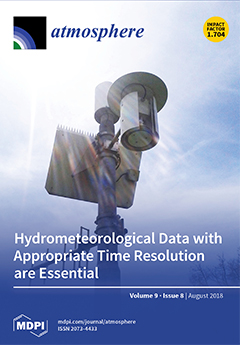The photochemical reaction of OH radicals with the 17 hydrocarbons
n-butane,
n-pentane,
n-hexane,
n-heptane,
n-octane,
n-nonane, cyclooctane, 2,2-dimethylbutane, 2,2-dimethylpentane, 2,2-dimethylhexane, 2,2,4-trimethylpentane, 2,2,3,3-tetramethylbutane, benzene, toluene, ethylbenzene,
p-xylene, and
o-xylene was investigated at 288 and 248 K
[...] Read more.
The photochemical reaction of OH radicals with the 17 hydrocarbons
n-butane,
n-pentane,
n-hexane,
n-heptane,
n-octane,
n-nonane, cyclooctane, 2,2-dimethylbutane, 2,2-dimethylpentane, 2,2-dimethylhexane, 2,2,4-trimethylpentane, 2,2,3,3-tetramethylbutane, benzene, toluene, ethylbenzene,
p-xylene, and
o-xylene was investigated at 288 and 248 K in a temperature controlled smog chamber. The rate constants were determined from relative rate calculations with toluene and
n-pentane as reference compounds, respectively. The results from this work at 288 K show good agreement with previous literature data for the straight-chain hydrocarbons, as well as for cyclooctane, 2,2-dimethylbutane, 2,2,4-trimethylpentane, 2,2,3,3-tetramethylbutane, benzene, and toluene, indicating a convenient method to study the reaction of OH radicals with many hydrocarbons simultaneously. The data at 248 K (k in units of 10
−12 cm
3 s
−1) for 2,2-dimethylpentane (2.97 ± 0.08), 2,2-dimethylhexane (4.30 ± 0.12), 2,2,4-trimethylpentane (3.20 ± 0.11), and ethylbenzene (7.51 ± 0.53) extend the available data range of experiments. Results from this work are useful to evaluate the atmospheric lifetime of the hydrocarbons and are essential for modeling the photochemical reactions of hydrocarbons in the real troposphere.
Full article





